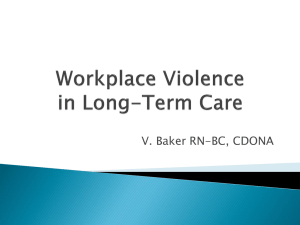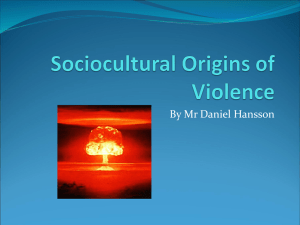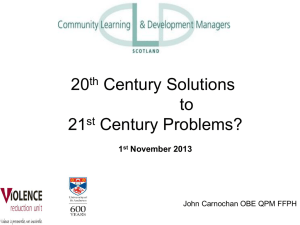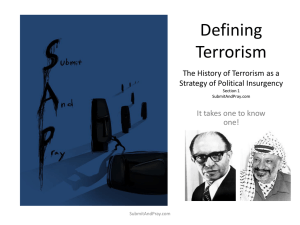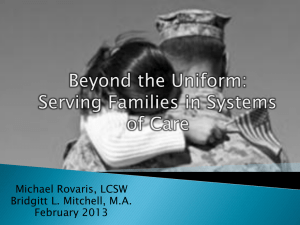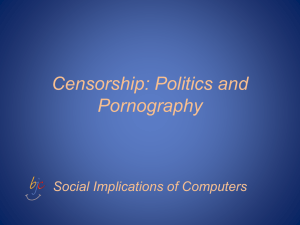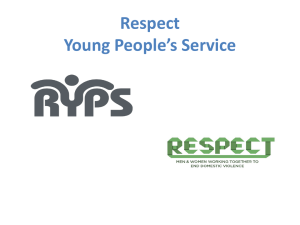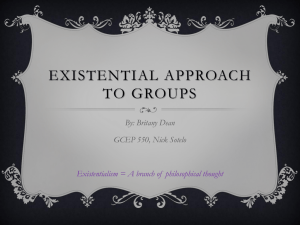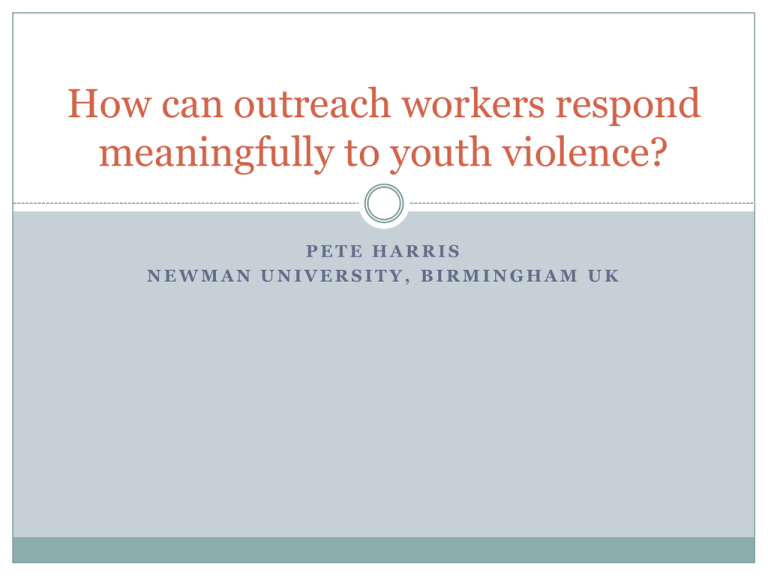
How can outreach workers respond
meaningfully to youth violence?
PETE HARRIS
NEWMAN UNIVERSITY, BIRMINGHAM UK
Young people can be…
Victim
Perpetrator
Witness
Violence can be…
Physical – the use of physical force, knives, guns, sexual
attack, fights
Psychological – verbal threats, bullying, intimidation,
humiliation, ridicule, stalking, ostracising
Material – inflicting damage on property or other
inanimate objects
Structural/state – the systematic failure of the state to
provide for the basic needs of individuals, or harsh or
discriminatory treatment at the hands of the state
Symbolic – the control and use of symbols, discourse,
images, meaning and geographical space to oppress and
dominate
Our model of meaningful responses (Harris and
Seal, 2014)
Existential
Structural
Cultural
Personal
The balancing act…..
Challenge
Collusion
Responding at the P level
•
Working through our relationships to find alternative means of meeting
young people’s needs – belonging, identity, loyalty, respect, security,
excitement, status, money….
•
Moving from ‘collusion with neutralisation’ to ‘constructive
confrontation’
•
Acting as a ‘container’ for projections and ‘recognising subjectivity’
•
Facilitating ‘street divorce’ and ‘knifing off’ through ‘redemptive
scripts’ into ‘generativity’
•
Identification - the worker as a ‘blueprint self’ to create a new
‘replacement self’
•
Working through ‘epiphanies’ and improvising through ‘teachable
moments’
Responding at the C level
•
Long term, embedded community work - not ‘chasing violence’ but
‘targeting through universalism’
•
Engaging with peer groups, families and the community as generators and
mediators of a violent ‘habitus’
•
Challenging ‘crab mentality’
•
Improvising to interrupt and deter violence in/between communities
•
Facilitating group activities/events that develop community self-efficacy
and self-belief, intergenerational and intercultural community
cohesion – building ‘bonding’ and ‘bridging’ capital
•
Utilising the ‘leverage’ of ‘home-grown’ workers
•
Engaging with geography - local planning processes and ‘mapping’
communities
Responding at the S level
•
Challenging (not colluding with) direct state violence e.g.
police brutality, harassment and racism
•
Exposing symbolic violence – surveillance
•
Asserting rights of young people to be in public space
•
Helping young people to ‘become the media’ and create
‘counter narratives’, making the invisible-visible
•
Political action and education to facilitate legitimate
expression of grievance
Responding at the E level
Learned helplessness and hopelessness
‘Live for today’, nihilism and spiritual deficit
Being there during epiphanies and existential crises
Asserting personhood of the ‘other’
Encouraging real not notional apprehension
Recognising the limits of dispassionate
professionalism and the value of passion
Encouraging the search for transcendence, meaning
and purpose. What is valuable and enduring in life?
Responding meaningfully to intersectionality
•
•
•
•
•
•
‘Hyper-masculinity’ - ‘empowering to dis-empower’?
‘Late modernity’ – de-centred, multiple identities –
recognising oppression but not essentialising
Young women as perpetrators and victims of sexual
violence?
Disrupting their embodied and linguistic investment
in patriarchal discourses - the “baby mother” – the
“bitch”
Taking father absence seriously within communities
without stigmatising?
Intersectional Interventions that ‘mix it up’?
Themed responses: Sport
‘Hooks for change’ with ‘currency’
Sport –
Street based boxing – ‘fair play’ football
Incapacitation
Mirror of social contract and as an alternative ‘community of
practice’ – new role models
Sublimation and cathartic release of aggression
Playing with the “moment of escalation”
The “strength to walk away” or just fitter gangsters?
“Never on its own” – value communication by reflexive workers
•
Creativity
Art, music, film, drama, photography
Composition, performances and
recording as a vehicle for building
reflexivity and counter narratives
Environmental
The “outdoors”
Getting away and into new, natural environments
Challenging, pro-social activities
Travel and exchange
Outreach youth work “tales”
• No conceptual clarity when working with ‘respect’
•
•
•
•
and ‘trust’
The ‘cult of personality’
Un-reflexive complicity
Not knowing when to ‘inhabit’ and when to ‘shake
up’ subjective life-worlds
Failiure to recognise existential deficits
Problematic worker identities
• The ‘too-wounded’ healer – projecting their own
•
•
•
•
•
‘baggage’ and unable to contain that of others
The colluder – unwilling to risk relationships and issue
a challenge
The rhetorical radical - inertia owing to a wholly
structural analysis and determinism
The pathologiser - working exclusively at ‘P’ level, not
challenging structural violence
The evangeliser - indoctrinating and converting
The evangelical materialist – refusing to
acknowledge existential deficits
Back to our model
Personal
Cultural
Reflexivity
Structural
Existential



